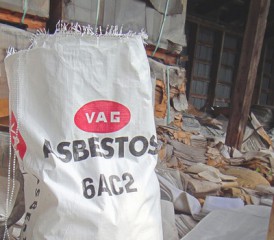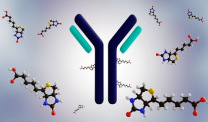Deadly Legacy of the James Hardie Asbestos Mine in Baryulgil
Awareness & ResearchWritten by Lorraine Kember | Edited by Walter Pacheco

James Hardie Industries began mining white asbestos in the small Aboriginal Australian community of Baryulgil in 1953.
The company offered full-time jobs to residents from surrounding indigenous communities. Grateful for the opportunity, they accepted. But their new employers covered up the mine’s deadly working conditions.
Located in the far northern coast of New South Wales, the mine was not one of the company’s priorities because its product contributed less than 1 percent to James Hardie’s profits, and much of its workforce were Aboriginals.
Although the mine closed in 1979, the effects of decades of asbestos exposure, such as cancerous tumors and other ailments, are seen today on the people of Baryulgil. It is estimated that 20 percent of residents have or will develop an asbestos-related disease such as mesothelioma.
Thanks to a new documentary based on Baryulgil that premiered at the Sydney Film Festival in June and lawmakers calling for a probe into the safety of the closed Australian mine, the plight of those residents devastated by asbestos is coming to light.
Hazardous Working Conditions Exposed Workers to Asbestos
Working conditions at the mine were extremely uncomfortable and dangerous.
During the mine’s 26-year operation, it employed an estimated 350 Aboriginals. Teams of 20 to 40 workers mined the ore during peak periods.
The chrysotile ore that workers milled each day created a thick haze of asbestos dust that coated everything, including the workers who could barely identify other miners beside them.
Measures to control the asbestos dust cost $70,000 to $80,000, but James Hardie failed to install them.
Housing did not come with the job.
Aboriginal workers and their families remained on company property and lived in crude manmade shacks, typically constructed from used kerosene tins. Floors were crafted from crushing ant’s nests, mixing the material with water and then pouring the mixture until it hardened.
Apart from providing shelter, the shacks offered little in the way of comfort. Workers washed the burlap bags that once carried asbestos and repurposed them as floor coverings, bedcovers and curtains.
Their shacks had no electricity, running water or sewage system.
During mill operations, a thick cloud of white asbestos dust hovered above the town, making its way into the crude homes and schools, exposing women and children, as well as contaminating water sources.
Children also played in the massive piles of mill residue used for roadwork projects.
James Hardie Closes Baryulgil Asbestos Mine
James Hardie sold the Baryulgil asbestos mine to Woodsreef Mines Ltd. in 1976 as asbestos litigation in the U.S. intensified.
Australian Broadcasting Company journalist Matt Peacock in 1977 exposed the hazardous conditions and workplace dangers of the mine on national television. Mining operations at Baryulgil ceased shortly afterward.
The mine officially closed in 1979. Workers removed the mill, filled the pit with rainwater, dismantled the mine’s machinery and sold it for scrap. Officials planted trees on the piles of mill residue and fenced off the area.
State federal authorities said the project to shut down and remediate the area cost $3.5 million.
Government Launches Probe into James Hardie Operations at Baryulgil
In 1983, the government launched an inquiry into the working conditions at Baryulgil. The inquiry was the first regarding the mining of asbestos.
During the inquiry, James Hardie officials disputed claims of unsafe working environments and stated that he did everything possible to reduce work hazards at his company.
Company officials also denied claims James Hardie had racially exploited the Aboriginal people. Officials said they didn’t racially exploit anyone because conditions at Baryulgil mirrored those at the Wittenoom mines, where workers were mostly white.
Not long after the inquiry, government officials built a health center at Grafton that offered services to victims of Baryulgil.
The NSW Dust Diseases Authority handed compensation payments of less than $20,000 to those affected by the asbestos dust at the mine. Workers at the Wittenoom asbestos mines received a mass compensation payout of $18.4 million.
Despite government promises of continued health monitoring at Baryulgil, little was done beyond the health center.
Second Probe into Baryulgil
Officials with the New South Wales Green party called for a state inquiry into Baryulgil in July.
Upper House MP Jan Barham will be visiting Baryulgil to investigate reports that areas previously cleaned after the mine closed remain safety hazards for residents.
Barham will gather information from former town residents who may already have succumbed to illness, and who didn’t know it was related to the Baryulgil asbestos mine. She will also be looking into whether James Hardie’s 1983 compensation was adequate.
The Legacy of the Baryulgil Mine
When Peacock returned to Baryulgil in 2005 for a follow-up on the miners and their families since the mine closed, he found a community struggling with unusual cancers affecting young and old, and a graveyard full of men and women who had died between the ages of 30 and 40.
Remaining residents welcomed the chance to talk about the asbestos mine and how it had affected their lives.
Resident Greg Harrington told Peacock he had been exposed to asbestos dust so much that it was coming out of his skin. “After 40 years, it is still coming out of my fingers,” he said. “When I was lifting the bags of asbestos to get them off the scales, there was nothing to protect myself.”
Other residents told Peacock they had signs of scarring on their lungs and lived in fear of being diagnosed with mesothelioma in the future.
Alec Robinson, a resident who played on the piles of asbestos tailings as a child, told Peacock he had lost an eye because of a cancerous tumor. According to Robinson, he was the only one to have suffered from this condition.
Peacock’s report on national television raised much needed interest in the plight of the Baryulgil Aboriginals and resulted in a lung-screening bus sent to the town. CT scans of more than 100 Baryulgil residents showed signs of asbestos-related abnormalities.
Book and Documentary on Baryulgil
Peacock later wrote “Killer Company,” a book that exposed the criminal history of the Reid family and others involved in the management of the James Hardie asbestos manufacturing company.
Law professor and commentator Larissa Behrendt wrote and directed the documentary “Under Skin, In Blood.” The 12-minute film portrays the impact of asbestos mining on Baryulgil.
The film debuted at the Sydney Film Festival in June.
Baryulgil’s past may be mired in tragedy, but thanks to the efforts of many government inquiries, the media and others interested in telling the town’s story, residents and former asbestos miners will hopefully get the justice they deserve.







